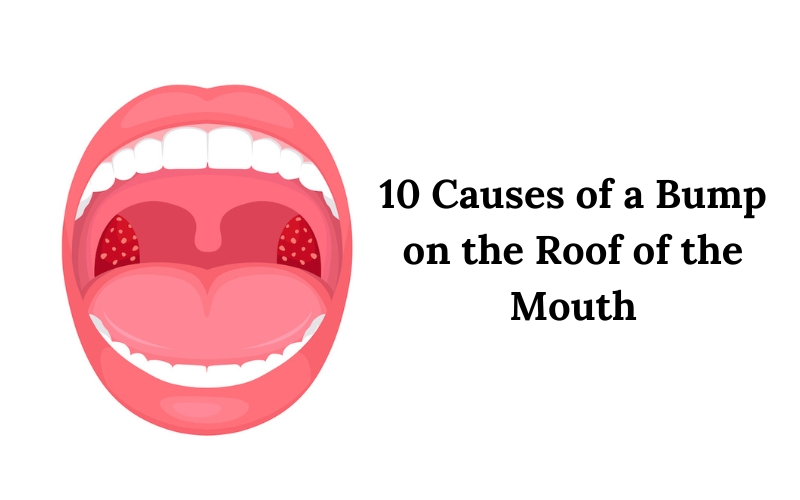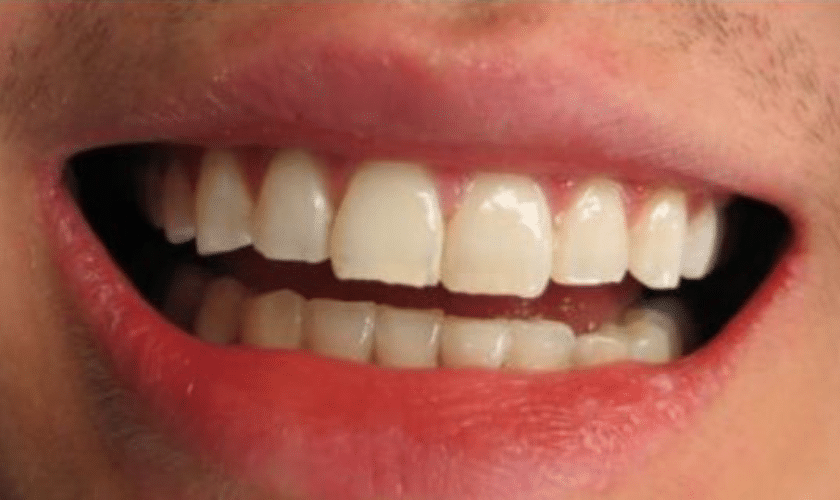
A typical problem that can develop for a number of reasons is a bump on the roof of the mouth. While many of these bumps are harmless and temporary, they can be unsettling and warrant attention.
It is essential to recognize the differences between small irritations and more serious disorders by knowing the sources of these pimples. It is important to remember that if a bump persists or causes significant discomfort, seeking professional advice from a healthcare provider is advisable. Early diagnosis can prevent complications and ensure appropriate treatment.
Normal Anatomy of the Roof of the Mouth
The palate, often known as the roof of the mouth, is divided into the hard and soft palates. The hard palate is the bony front portion, while the soft palate is the softer, flexible rear part. It is covered by a layer of mucous membrane, which appears smooth and pink in a healthy mouth. The soft palate has a more textured surface due to the presence of various glands and tissues.
Normal variations include minor bumps or ridges, which are often benign. However, abnormalities such as unusual growths, persistent bumps, or changes in texture may indicate an underlying issue.
Distinguishing between normal anatomical features and potential problems involves noting any changes in size, color, or sensation. Monitoring these changes helps in identifying when further evaluation is necessary.
Causes of Bumps on the Roof of the Mouth
- Canker Sores
Tiny, excruciating ulcers called canker sores develop on the mucous membranes within the mouth.
These sores are usually round, white, or gray, with a red halo. They can cause burning or tingling sensations.
Canker sores often heal on their own in one to two weeks. Over-the-counter treatments and mouth rinses can help alleviate discomfort. Avoiding spicy or acidic foods can prevent irritation.
- Cold Sores (Herpes Simplex Virus)
The herpes simplex virus causes cold sores, which usually affect the lips but can also appear in the mouth.
Symptoms include small, fluid-filled blisters that may be painful or itchy. They often precede by a tingling sensation.
Antiviral drugs can lessen the intensity and length of outbreaks. Keeping the affected area clean and avoiding direct contact with the sores can prevent spreading.
- Oral Thrush (Candida Infection)
Candida yeast is the source of oral thrush, a fungal illness that causes white patches on mucosal membranes.
Creamy white lesions on the tongue, cheeks, or roof of the mouth are one of the symptoms, and they can hurt or make swallowing difficult.
Antifungal medications, either topical or systemic, are used to treat oral thrush. Maintaining good oral hygiene and managing underlying conditions like diabetes can help prevent recurrence.
- Mucocele (Mucous Cyst)
A mucocele is a fluid-filled cyst that forms when a salivary gland duct becomes blocked or damaged.
These cysts are typically painless, translucent bumps. They can vary in size and may change in appearance.
Mucoceles often resolve on their own. If persistent or bothersome, a dentist may need to drain or remove the cyst.
- Palatal Tori (Exostoses)
Palatal tori are benign bony growths on the hard palate.
These growths are generally asymptomatic but may become sore if irritated.
Usually, no treatment is needed unless the bumps cause discomfort. In those cases, surgery can be considered to remove the growth.
- Allergic Reactions
Allergic reactions can cause swelling or bumps in the mouth due to sensitivities to certain foods or substances.
Symptoms might include swelling, redness, and itching of the mucous membranes.
Identifying and avoiding allergens is crucial. Antihistamines or corticosteroids may be prescribed for severe reactions.
- Oral Trauma or Injury
Trauma or injury to the roof of the mouth can result from biting, burns, or foreign objects.
Injuries may cause swelling, bruising, or bumps that are tender to the touch.
Rinsing with saltwater can help soothe the area. Avoiding irritants and allowing time for healing usually resolves the issue. Severe injuries may require medical attention.
- Oral Cancer
Oral cancer can manifest as persistent bumps or sores that do not heal.
Symptoms include non-healing sores, lumps, or patches that may be red or white. Pain or difficulty swallowing can also occur.
Early detection is vital for effective treatment. Regular dental exams can help identify potential oral cancer symptoms early on.
- Sinus Infection
A sinus infection may result in referred pain or swelling on the roof of the mouth due to sinus pressure.
Symptoms include congestion, facial pain, and possibly a bump or swelling in the palate.
Treating the underlying sinus infection with antibiotics or decongestants usually alleviates the bump.
- Denture or Dental Appliance Issues
Ill-fitting dentures or dental appliances can cause irritation or pressure points on the palate.
Symptoms include discomfort, redness, or bumps in areas where the appliance contacts the mouth.
Adjusting the fit of the dentures or appliances by a dental professional can resolve these issues.
When to See a Dentist?
Certain signs indicate that you should seek professional medical advice. Persistent bumps that do not improve, especially if they are painful or changing in size, may need evaluation. Unexplained oral sores that do not heal within a couple of weeks, significant discomfort, or other symptoms such as difficulty swallowing or speaking are also concerning.
Appropriate diagnosis and treatment require early contact with a healthcare provider, such as a dental professional. A professional evaluation ensures that any serious conditions are identified and managed appropriately.
Prevention and Care Tips
Maintaining good oral health can help prevent bumps on the roof of the mouth. As important as avoiding irritants like spicy or acidic foods is brushing and flossing on a regular basis. If you grind your teeth or play sports, wearing a mouthguard can help prevent injuries. Overall oral health is also supported by eating a balanced diet and being hydrated.
Additionally, routine dental check-ups can help identify and address potential issues before they become significant problems.
Understanding the potential causes of bumps on the roof of the mouth can help you determine when to seek medical advice. While many bumps are benign and temporary, some may require professional evaluation to rule out serious conditions.
Regular oral hygiene and prompt attention to persistent issues are key to maintaining oral health. If you have concerns or experience unusual symptoms, consulting a healthcare professional is the best course of action for proper diagnosis and treatment.


